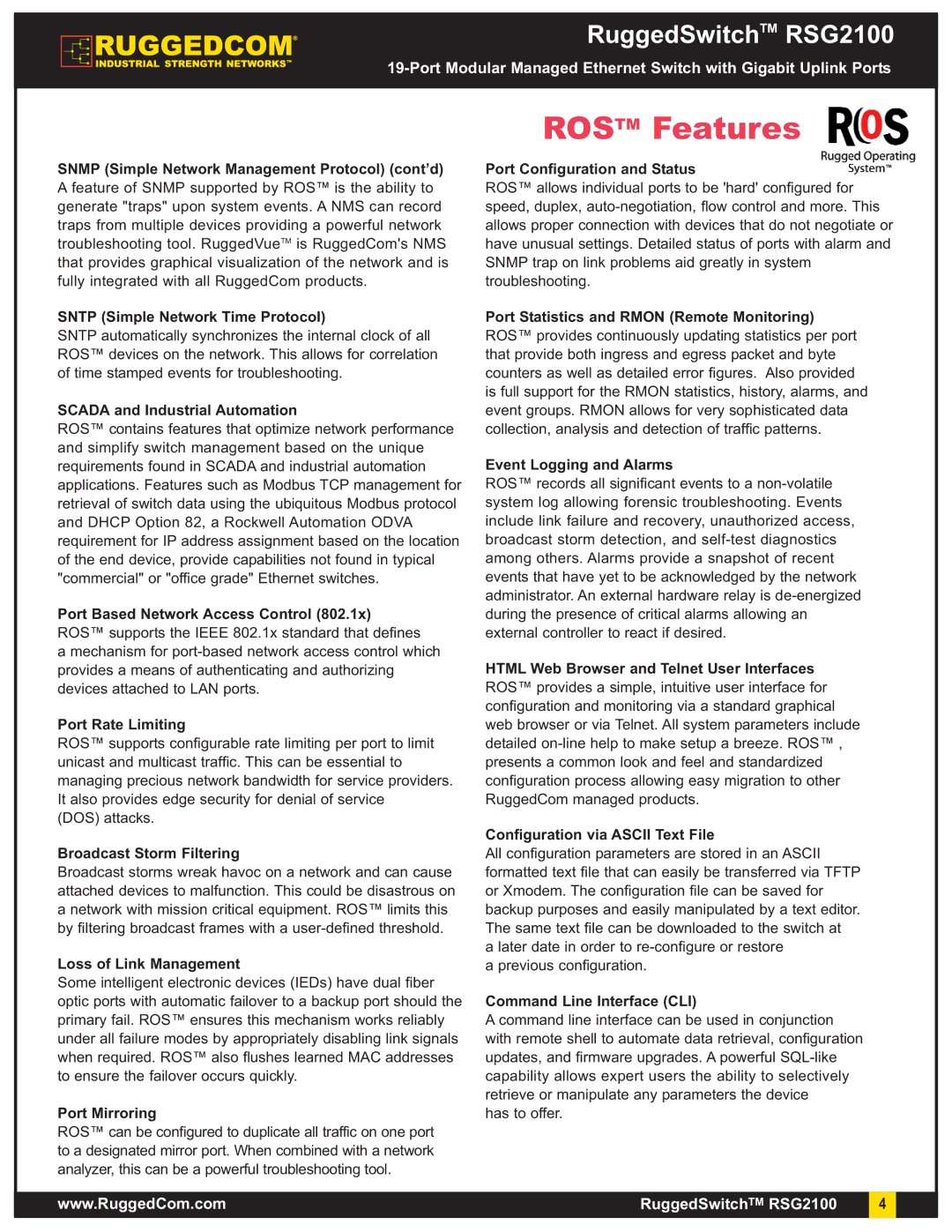RSG2100 specifications
The RuggedCom RSG2100 is a robust networking device specifically designed for mission-critical applications in harsh environments. This device is ideally suited for industrial sectors including utilities, transportation, and oil and gas, where reliability and resilience are paramount. One of its standout features is its rugged design, which allows it to operate in extreme temperatures ranging from -40°C to +85°C. This makes it highly versatile and capable of functioning in both indoor and outdoor installations.The RSG2100 supports flexible networking options, including both serial and Ethernet communications, catering to a variety of field devices and ensuring seamless integration into existing infrastructure. It is equipped with multiple Gigabit Ethernet ports, featuring Power over Ethernet (PoE) capabilities. This allows for the powering of devices like IP cameras and wireless access points directly through the network cable, reducing the need for additional power supplies.
In terms of technology, the RSG2100 utilizes a highly secure architecture that includes support for advanced encryption protocols. This ensures that sensitive data transmitted through the network is protected against unauthorized access and potential cyber threats. Moreover, the device includes built-in redundancy features such as dual power inputs and failover capabilities, which enhance network reliability and minimize downtime.
User-friendly management is another key characteristic of the RSG2100. It comes with an intuitive web interface and supports industry-standard protocols like SNMP for easy monitoring and management. This allows IT personnel to quickly configure, diagnose, and troubleshoot network issues.
Additionally, the RuggedCom RSG2100 is compliant with various industry standards, including IEC 61850 for substation automation and IEEE 1613 for communications networking in electric power substations. This compliance ensures that it can be effectively deployed in environments that require strict adherence to safety and performance standards.
The combination of rugged design, flexible networking capabilities, advanced security features, and ease of management makes the RuggedCom RSG2100 a leading choice for organizations that demand reliable communication solutions in challenging industrial settings. As industries continue to evolve towards smart technologies, devices like the RSG2100 will play a critical role in maintaining robust, secure, and efficient networks.

